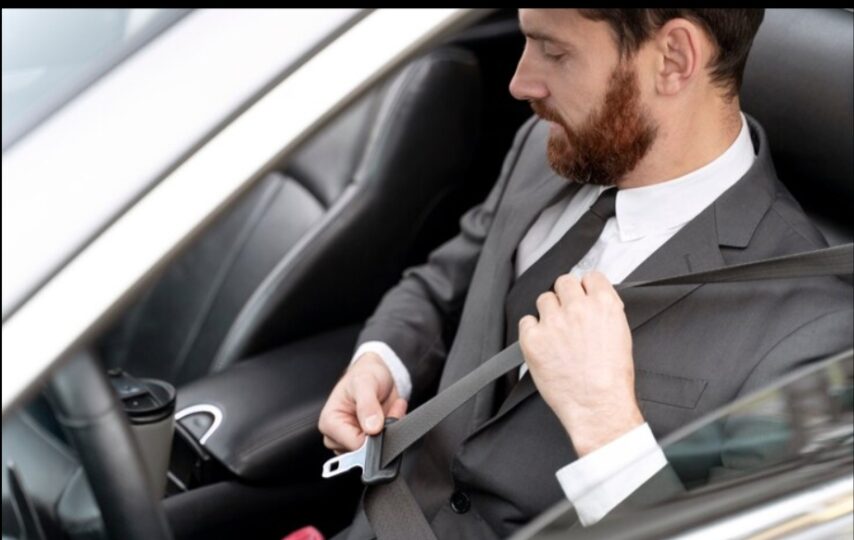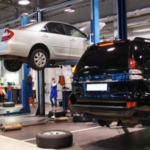In moment’s ever- changing machine technological world, safety remains the top precedence for both manufacturers and consumers. The progression of introductory safety measures to sophisticated systems in ultramodern motorcars demonstrates the assiduity’s commitment to saving lives and precluding injuries. Understanding the part of active and unresistant safety features is critical for motorists and machine suckers since it not only improves the driving experience but also provides them with potentially life- saving information.
Ultramodern vehicles are designed with a mix of active and unresistant safety features, each playing a pivotal part in icing the safety of passengers. Active safety features are designed to help accidents before they be. They include technologies that help the motorist in controlling the vehicle and avoiding collisions. For more detailed information on the rearmost safety technologies and vehicles equipped with advanced safety features, you can visit nellis car auction, which offers a comprehensive look into modern car safety advancements.
In discrepancy, unresistant safety features are intended to guard inhabitants in the case of an accident. These include structural design rudiments and systems that reduce injuries by absorbing and dispersing crash forces. By understanding how these technologies work, auto possessors can make further informed opinions about their vehicles and driving habits, performing in safer roads for all.
Active Safety Features: Preventing Accidents Before They Occur
Active safety Rudiments serve as the first line of defense in accident forestallment. They’re intended to ameliorate vehicle control and offer essential help during heads. The crucial active safety features are
- Anti-lock Braking System (ABS): This system prevents the bus from locking up during retardation, enabling the motorist to maintain steering control, which is vital in avoiding obstacles during an exigency stop.
- Electronic Stability Control (ESC): ESC helps correct oversteer or understeer by automatically applying thickets to individual bus, and stabilizing the vehicle during sharp turns or on slippery roads.
- Adaptive Cruise Control: This point adjusts the vehicle’s speed to maintain a safe distance from the auto ahead, reducing the motorist’s workload and enhancing safety on roadways. Ok
- Lane Departure Warning Systems: These systems warn the motorist when the vehicle begins to drift out of its lane without signaling, reducing the threat of side collisions and run- off- road accidents.
- Automatic Emergency Braking (AEB): AEB systems Descry implicit collisions with other vehicles or obstacles and automatically apply the thickets if the motorist fails to respond in time.
By integrating these technologies, manufacturers aim to reduce the liability of accidents caused by mortal error, which is still the leading cause of road accidents moment.
Passive Safety Features: Minimizing Injury During Accidents
While active safety measures help to avoid accidents, unresistant safety features come into effect during and after a collision. Their primary purpose is to reduce inhabitant injuries by absorbing and spreading crash forces down from the passenger cube. The crucial unresistant safety rudiments include
- Crumple Zones: These are areas of the vehicle designed to distort and crumple in a controlled manner during a collision, absorbing the energy of the impact and reducing the force transmitted to inhabitants.
- Safety Cell: The safety cell is a strong, rigid structure that surrounds the passenger compartment. It is designed to remain intact during a crash, providing a protective space for occupants.
- Seat Belts: Seat belts are the most fundamental passive safety feature. They keep occupants in place, reducing the risk of hitting the car’s interior or being ejected during a collision.
- Airbags: In a collision, airbags inflate rapidly to provide a cushioning barrier between occupants and the vehicle’s interior, significantly reducing the risk of serious injuries.
- Head Restraints: Duly acclimated head conditions help whiplash injuries by limiting the backward movement of the head during hinder- end collisions.
Ultramodern buses frequently incorporate advanced accoutrements and engineering ways, similar as high- strength sword and energy- absorbing steering columns, to further enhance the effectiveness of these unresistant safety features.
The Synergy Between Active and Passive Safety Features
The real strength lies in the combination of active and unresistant safety features. While active features work lifelessly to help accidents, unresistant features stand ready to cover inhabitants should a collision do. This community creates a comprehensive safety net that significantly reduces the pitfalls associated with driving. Manufacturers continue to introduce, integrating detectors, cameras, and artificial intelligence to produce systems that can prognosticate and reply to a wide range of driving scripts. For case, unborn vehicles may be suitable to communicate with each other and with structure to help accidents in ways we can only imagine moment.
This changing terrain of vehicle safety is leading to an period of connected and driverless motorcars, making the interplay between active and unresistant features indeed more important. As vehicles come more intelligent, they communicate not just with one another, but also with business lights, road detectors, and other corridor of civic structure, perfecting situational mindfulness and lowering the threat of accidents. This position of integration seeks to establish an terrain in which safety features aren’t insulated within individual vehicles, but rather form part of a broader, connected network. This networked approach to safety has the implicit to significantly ameliorate our roads, making them safer not only for motorists but also for climbers, cyclists, and other road druggies. The capability of these technologies to work together represents a step toward a future in which road safety is greatly bettered, and the thing of zero business losses becomes further attainable..
The Importance of Informed Choices and Responsible Driving
While ultramodern buses are equipped with an array of safety features, the part of the motorist remains pivotal. Understanding and rightly using these features, combined with responsible driving practices, can significantly enhance road safety. motorists should stay informed about the safety features available in their vehicles and how to use them effectively. likewise, regular vehicle conservation is essential to insure that safety systems serve rightly when demanded. For illustration, worn tires or thickets can compromise the effectiveness of ABS and ESC systems, leading to potentially dangerous situations.
Education and mindfulness are critical factors in maximizing the effectiveness of auto safety systems. Automakers and safety associations are decreasingly fastening on educating the public about how to use these technologies successfully, employing expansive primers, online tutorials, and interactive driving assignments. similar training conditioning help motorists in understanding the capabilities and limitations of their vehicle’s safety systems, allowing them to respond more effectively in pivotal situations. likewise, knowing the significance of situational mindfulness and avoiding distractions like texting or eating while driving can help help accidents before they be. individualities who keep informed and take a visionary approach to driving can make a substantial donation to the general safety of all road druggies, strengthening the defensive goods of contemporary auto safety outfit.
Summary
The integration of active and unresistant safety features in ultramodern buses represents a significant advancement in automotive safety. By understanding the part and function of these features, motorists and auto possessors can make informed opinions that contribute to safer driving gests . Flash back, while technology can give a safety net, the responsibility eventually lies with the motorist to maintain control of the vehicle and to drive safely. By combining the strengths of active and unresistant safety features with responsible driving habits, we can continue reducing the number of accidents and injuries on our roads.



